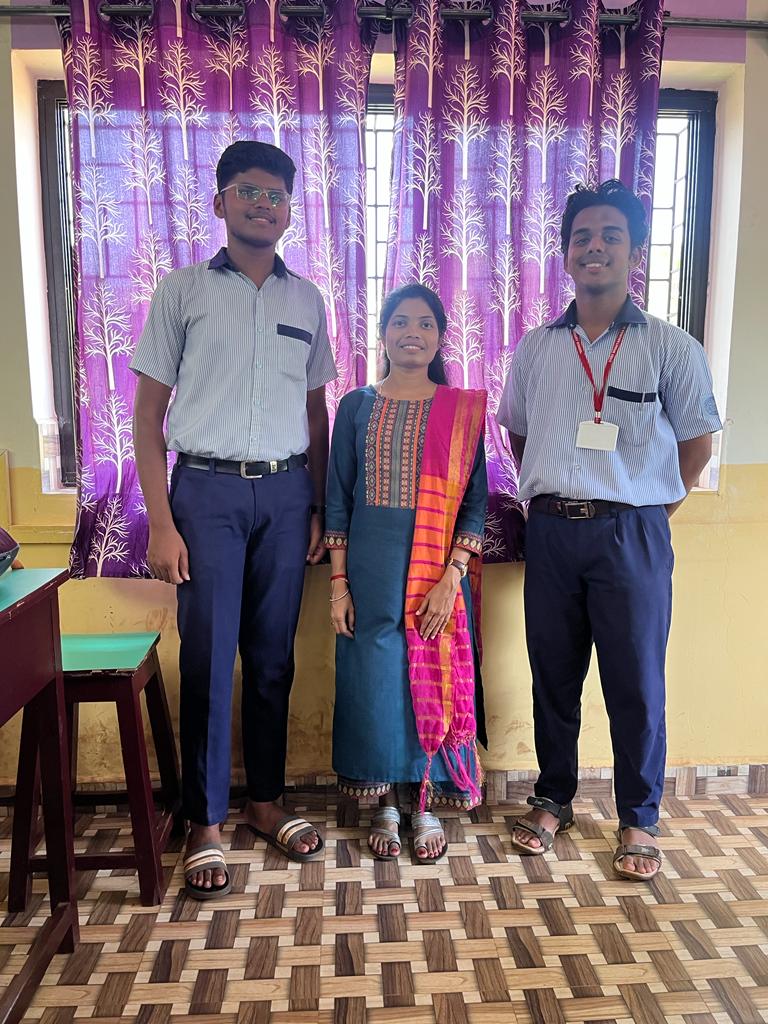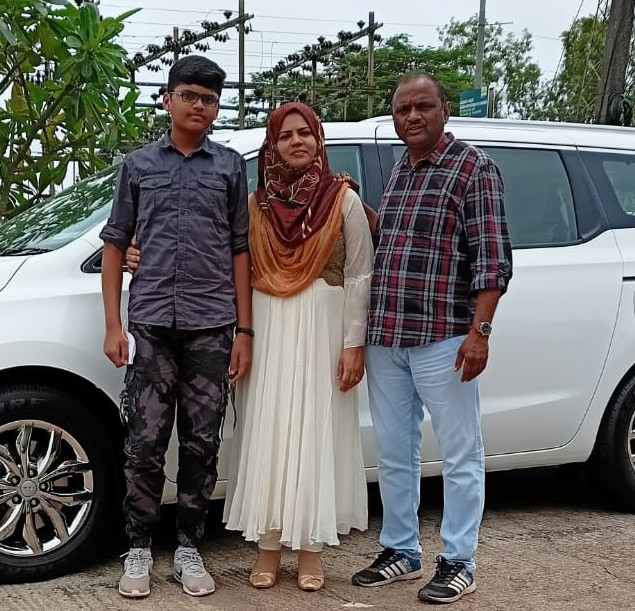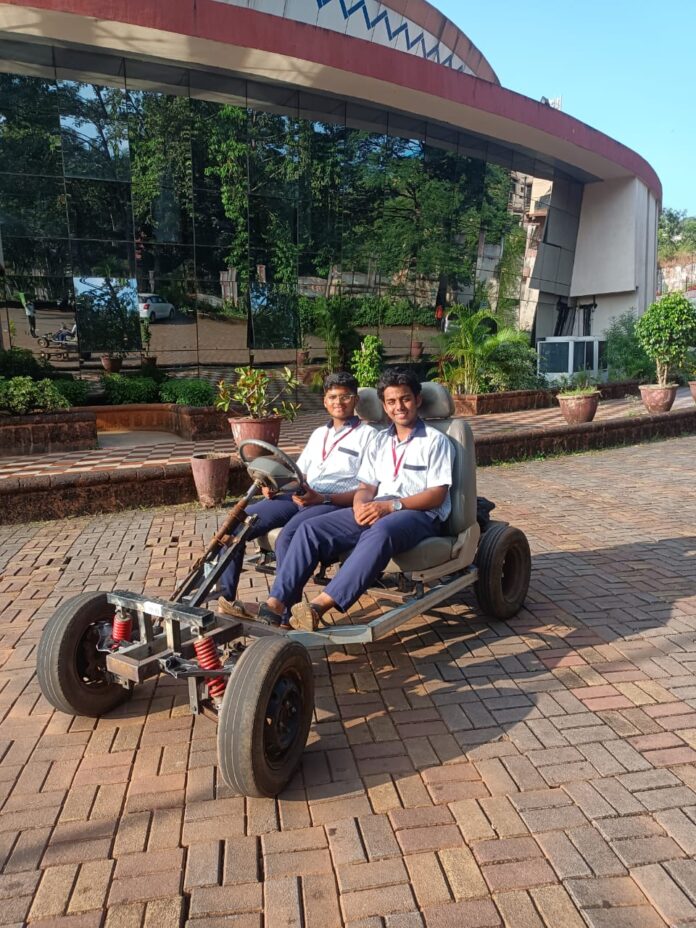Imran Inamdar | Two Circles
Mohammad Sehab Beig and Muhammad Shaan Sheikh, two classmates from Shantadurga Higher Secondary School in Goa’s Bicholim town, were assigned a 20-mark physics assignment for 11th grade. The two youngsters, together with their friend Moun Mamlekar, a commerce student, worked for a month to develop an electric car powered by a lead acid battery.
The car gained attention when it was displayed at Delhi’s Ravindra Bhavan as part of ‘The Western India Science Fair Competition’. The electric car is powered by a lead acid battery rather than a lithium battery, which reduces its cost significantly.
From a Physics Project To Developing an EV
Sheikh and Beig had been friends since childhood and used to repair remote-controlled cars when they broke down, so when their physics teacher, Deviya Gaonkar, assigned them a physics project to build something innovative worth 20 points, the boys seized the opportunity to demonstrate their talent for building things.

“When our teacher assigned us the project and specified that we may design anything related to physics, our initial goal was to build an engine, but we later decided not to limit ourselves to just engines. So, taking a step forward, we decided to build an entire car,” Sheikh told Two Circles.
The motive for developing an electric car aligns with the growing demand for sustainable transportation options, as electric vehicles dramatically reduce air pollution and greenhouse gas emissions, thereby addressing environmental concerns.
Mamlekar, whose family owns an automobile garage, assisted Sheikh and Beig with the technical aspects of the project.
They showed the model to their teacher, Goankar, and after receiving a positive response, they began collecting the parts and materials required to build the car.
Specifications of the Electric Car
After working tirelessly for a month, the duo completed the automobile, which includes a brushless DC motor that converts electrical energy into mechanical energy and a 48-volt lead-acid battery system connected in series with four 12-volt batteries. Its standout feature is its strong load-bearing capacity, which can support up to one tonne of weight.
Charging the vehicle is achieved by connecting it to a power source compatible with the lead-acid battery setup. While charging periods may be longer than with advanced lithium-ion batteries, the lead-acid configuration remains a practical option. In terms of speed, the automobile can reach a maximum of 60-70 kilometers per hour, demonstrating its ability to cover moderate distances efficiently, making it suitable for diverse urban and suburban commuting needs.

Hindrances Along the Way
Building the electric car was a difficult endeavour, and they faced discouragement from others. Gaonkar, their physics teacher, stated that many people discouraged them from building the car, but they persevered and completed it.
The two spent over INR 70,000 on making the car, which they received from their parents and several well-wishers.
They have also attempted to raise funds to upgrade their automobile to ones that can be auto-charged while in motion but have had little success. The project is only two alternators away from being self-sufficient in terms of charging.

‘Parents Have Always Been a Huge Support’
Sheikh’s mother is a chemist, and his father is a businessman; both are very supportive of their son’s project.
Beig’s mother, Mubina Beig, who runs a pre-primary school in town, helped them in finding spare parts for the car.
“My parents have always been a huge support when it comes to my inclination towards experimenting with things,” he stated.
A Career in Innovation
This is not the duo’s first innovative design. Sheikh created a small solar vehicle a few years ago, while Beig made a generator in fifth grade and a hydraulic crane in eighth grade.
Speaking about their goals, Beig stated that he wants to pursue a career in science and research to enhance his curiosity and innovative tendencies, whilst Sheikh is interested in a career that allows him to blend science and compassion to contribute to the well-being of others.
They intend to submit their design to vehicle manufacturers. “If a compelling proposition arises, we are open to collaboration,” Sheikh said.
Imran Inamdar is an independent reporter based in Goa, India.


